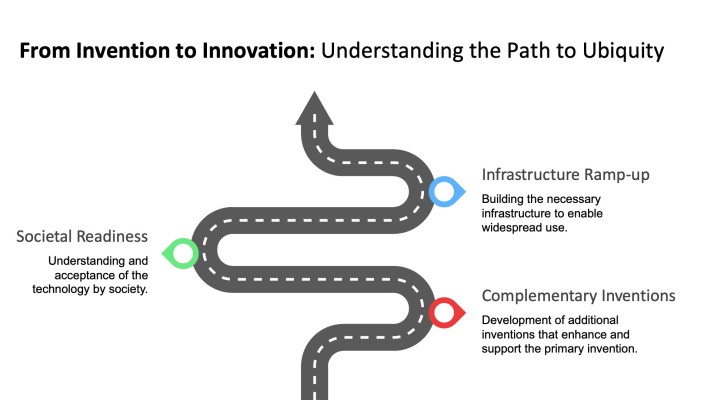For any invention, when it is just invented, it has zero social and economic value. An invention first has to be “used.” Innovation is the application of the invention. Often, the real value of an invention is realized only after it becomes ubiquitous.
For an invention to transition into a transformative innovation, three aspects must align:
1. Complementary Inventions
An invention rarely stands alone. It often requires additional complementary inventions to unlock its full potential. This interconnected web of (complementary) inventions is what drives adoption.
For instance, the Internet was invented in the 1960s! However, the Internet’s value remained dormant without the development of web browsers like Chrome and Firefox and languages like HTML (both were invented in the 1990s). These complementary inventions provided the necessary tools for the Internet to become functional and valuable to all.
2. Societal Readiness
Societal readiness plays a pivotal role in the adoption of new technology.
As a society, we had to evolve. The word ‘digital’ was a new paradigm for our society in the 1990s. We had to understand the value of digital information. It took decades for people to understand and appreciate the potential of digital information.
3. Infrastructure Ramp-up
The third pillar is the ramp-up of relevant Infrastructure that supports the widespread use of the invention.
For the Internet, the expansion of broadband and telecommunications infrastructure was critical. The Internet could only have reached its ubiquity with this ramp-up of the relevant Infrastructure. This principle applies to any technological shift, whether it’s computing, mobile phones, or cloud infrastructure.

Needless to say, as a technologist, we severly underestimate how long these take.
I am deeply grateful to Professor Kevin Bryan for his invaluable guidance and insights, which have enriched my understanding of technology diffusion and its pivotal role in transitioning an invention to innovation.
Where do you think Generative AI is on its path to ubiquity?
